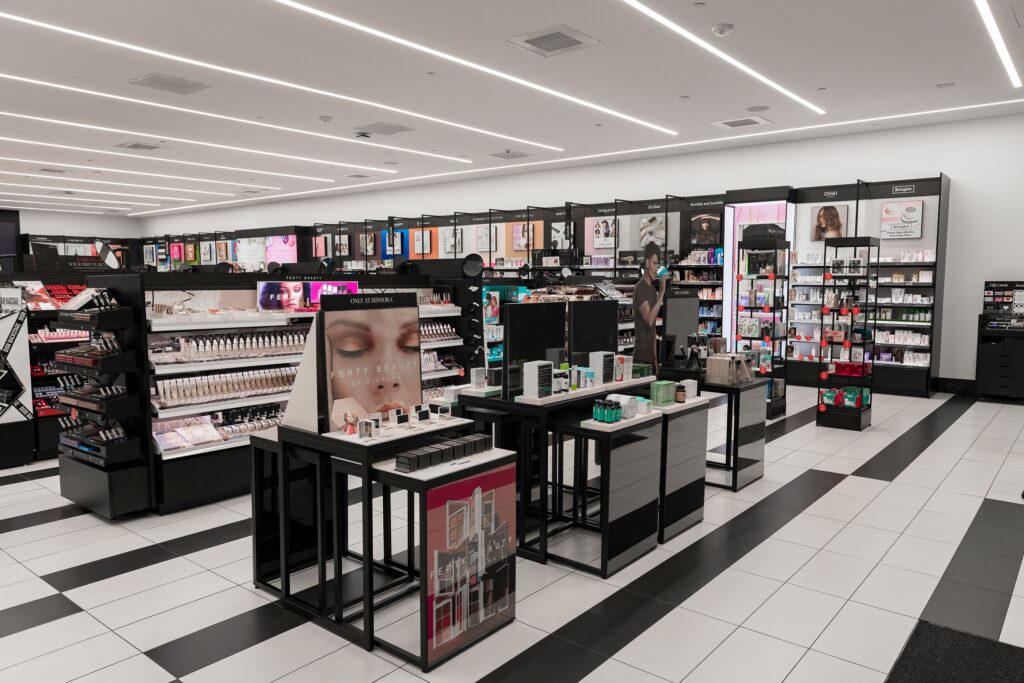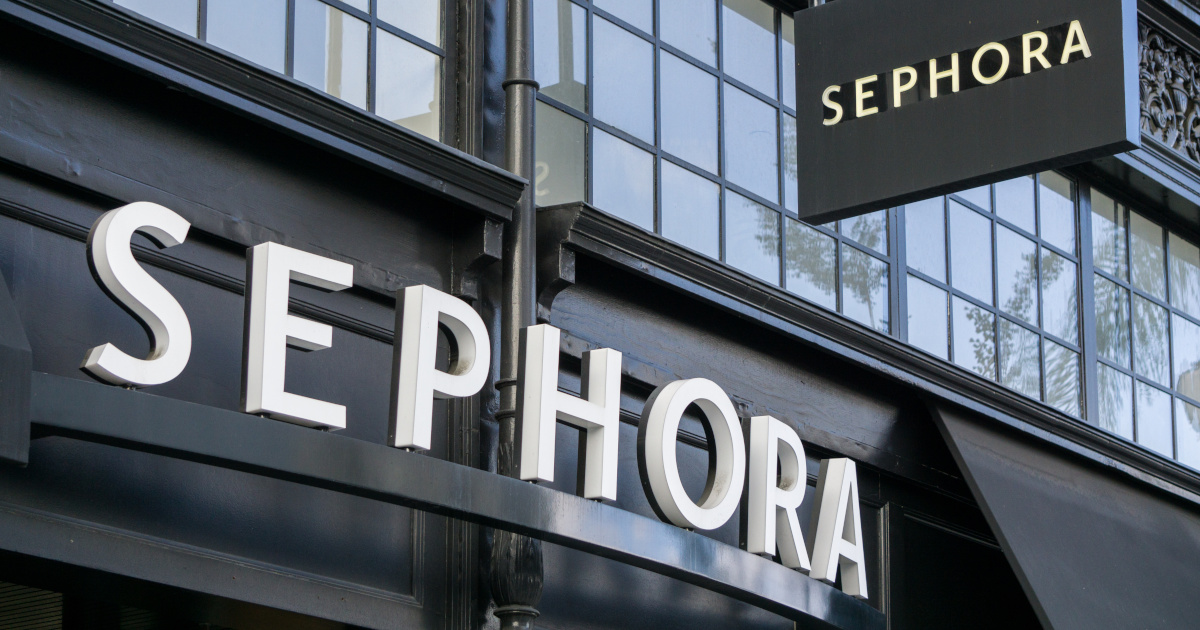Sephora, the global beauty retail giant, has revolutionized the way consumers experience and purchase beauty products. With its extensive selection, diverse brand offerings, and innovative approach to customer service, Sephora has become an industry leader in the beauty and cosmetics market. This article delves into the origins, growth, and unique features of Sephora, highlighting its impact on the beauty industry and its loyal customer base.
Sephora traces its roots back to France in 1969 when Dominique Mandonnaud founded the first Sephora store in Limoges. The name “Sephora” is derived from Moses’ wife, Zipporah, who was known for her beauty. Mandonnaud envisioned a revolutionary retail concept that departed from the traditional beauty counter model prevalent at the time. Sephora aimed to create a space where customers could freely explore and experiment with a vast assortment of beauty products.
After experiencing success in France, Sephora expanded internationally in the 1990s, opening stores in the United States, Canada, and other European countries. In 1997, the luxury goods conglomerate LVMH Moët Hennessy Louis Vuitton acquired Sephora, providing the brand with resources and opportunities for further expansion. Since then, Sephora has rapidly grown its global footprint and now operates thousands of stores across more than 30 countries.
Sephora’s success lies in its ability to offer a unique and immersive shopping experience to customers. One of its key differentiators is the “open-sell” format, where customers are encouraged to explore the wide range of products on their own. This self-service approach empowers shoppers to touch, swatch, and test products, fostering a sense of discovery and enabling them to make informed purchasing decisions.
Sephora prides itself on its extensive selection of beauty products, boasting an impressive range of cosmetics, skincare, haircare, and fragrance offerings. The retailer features an ever-expanding collection of both established and emerging brands, including popular names like Fenty Beauty, Huda Beauty, Benefit Cosmetics, and many more. Moreover, Sephora’s own private label, Sephora Collection, provides customers with affordable yet high-quality options across various product categories.
Sephora’s unparalleled commitment to providing an immersive retail experience, its vast selection of beauty products, and its dedication to customer education have solidified its position as a global leader in the beauty industry. Through its innovative approach, Sephora continues to shape the way consumers discover, experiment with, and shop for beauty products. With its focus on diversity, sustainability, and social responsibility, Sephora not only offers a wide range of products but also reflects the evolving values and expectations of today’s beauty consumers.
Marketing Mix of Sephora
Sephora has captured the hearts of beauty enthusiasts worldwide. Behind its success lies a carefully crafted marketing mix strategy, encompassing the 4Ps: Product, Price, Place, and Promotion. This part delves into each element of Sephora’s marketing mix, shedding light on how the brand creates a compelling customer experience and maintains its position as a leader in the beauty industry.
Product: A Curated Beauty Haven
Sephora takes pride in offering an extensive range of products that caters to the ever-evolving beauty needs of its customers. The brand carefully curates its selection, ensuring that it represents a diverse mix of brands, product categories, and price points. Sephora’s product range includes cosmetics such as foundations, lipsticks, eyeshadows, and mascaras, as well as skincare products like cleansers, moisturizers, masks, and serums. Additionally, Sephora offers an extensive selection of haircare products and fragrances. By offering a wide variety of products, Sephora appeals to customers with different preferences, skin types, and beauty goals.
Sephora’s private label, Sephora Collection, is an integral part of its product strategy. It provides customers with affordable yet high-quality alternatives to established brands. Sephora Collection encompasses a vast array of products, including makeup, skincare, brushes, and tools, all developed with the brand’s commitment to innovation and quality in mind. This exclusive line adds value to Sephora’s product offering and strengthens its brand identity.
Moreover, Sephora continuously adapts its product selection to incorporate the latest beauty trends and innovations. The brand actively collaborates with beauty influencers, experts, and brands to introduce exclusive product launches and limited-edition collections. This approach ensures that Sephora remains at the forefront of the beauty industry, offering customers access to cutting-edge and sought-after products.
Price: A Spectrum of Beauty
Accessibility – Sephora recognizes the importance of providing beauty products at various price points to cater to a wide range of customers. The brand offers products across the entire pricing spectrum, from affordable options to high-end luxury brands. This pricing strategy allows customers to find products that suit their budgets without compromising on quality or style.
Sephora’s pricing strategy is guided by market research, customer preferences, and brand positioning. The brand strikes a balance between offering accessible price points through its own private label and featuring premium and luxury brands known for their quality and prestige. This comprehensive pricing approach enables Sephora to cater to the diverse financial capabilities and preferences of its customer base.
Furthermore, Sephora implements promotional strategies to enhance the value proposition for customers. The brand regularly offers sales, discounts, and promotions, both in-store and online. Sephora’s Beauty Insider loyalty program provides exclusive benefits, rewards, and personalized offers based on customer spending and engagement. These initiatives encourage repeat purchases and enhance customer satisfaction.
Place: Omnichannel Beauty Experience
Sephora’s distribution strategy combines a strong physical presence with a robust online platform, creating an omnichannel beauty experience for customers.
a. Physical Stores: Sephora operates thousands of physical stores worldwide, strategically located in bustling shopping areas, malls, and urban centers. These stores serve as immersive environments where customers can discover, explore, and experience the products firsthand. Sephora’s stores are designed with a modern and inviting aesthetic, featuring interactive displays, testers, and knowledgeable beauty advisors ready to assist customers. The physical stores also host beauty services, including makeovers, consultations, and skincare analysis, further enhancing the overall customer experience.

b. Online Platform: Sephora’s website and mobile app provide a seamless online shopping experience. Customers can browse an extensive product catalog, read reviews, access detailed product information, and watch tutorials and beauty content. The online platform also offers convenient features like personalized recommendations, virtual try-on tools, and the ability to create wishlists. Sephora ensures a consistent brand experience across channels, allowing customers to seamlessly transition between the physical and digital realms.
c. Ship-to-Store and Click-and-Collect: Sephora offers flexible delivery options, including ship-to-store and click-and-collect services. Customers can choose to have their online purchases delivered to a physical store of their choice, enabling them to collect their orders at their convenience. This integration of online and offline channels provides added convenience and flexibility for customers.
Promotion: Engaging and Inspiring Beauty Enthusiasts
Sephora employs a diverse range of promotional strategies to engage and inspire beauty enthusiasts, building brand awareness and loyalty.
a. Advertising: Sephora utilizes traditional advertising channels such as print media and television to showcase its products, promotions, and brand campaigns. Magazine ads, billboards, and TV commercials play a role in reaching a broader audience and generating interest in Sephora’s offerings.
b. Digital Marketing: Sephora places significant emphasis on digital marketing to connect with customers in the digital sphere. The brand maintains an active presence on social media platforms such as Instagram, YouTube, TikTok, and Facebook, sharing visually captivating content, beauty tips, tutorials, and behind-the-scenes glimpses. Sephora collaborates with beauty influencers, content creators, and makeup artists to amplify its reach and tap into diverse audiences. User-generated content is also encouraged, with Sephora often featuring customer photos and reviews on its social media platforms.
c. Events and Workshops: Sephora organizes in-store events, workshops, and beauty classes to provide customers with educational and interactive experiences. These events cover various topics, including makeup techniques, skincare routines, and fragrance exploration. Customers can participate, learn from industry professionals, and receive personalized advice from Sephora’s beauty advisors. These experiential events foster a sense of community and allow customers to deepen their relationship with the brand.
d. Exclusive Launches and Collaborations: Sephora frequently collaborates with brands, influencers, and celebrities to create exclusive product launches and limited-edition collections. These partnerships generate excitement and anticipation among beauty enthusiasts. Sephora’s collaborations often bring together unique perspectives and innovations, attracting a dedicated customer base and encouraging them to engage with the brand.
In summary, Sephora’s marketing mix encompasses a diverse range of products, accommodating various price points, a multichannel distribution strategy, and an array of promotional tactics. Through its meticulous product curation, accessible pricing, immersive retail experiences, and engaging marketing campaigns, Sephora has established itself as a trailblazer in the beauty industry, continuously captivating beauty enthusiasts around the globe.
Marketing Strategies of Sephora
Sephora has not only revolutionized the way customers shop for beauty products but has also set new standards in marketing strategies. Through its innovative and customer-centric approaches, Sephora has successfully built a strong brand presence and maintained its position as a leader in the beauty industry. This article explores the key marketing strategies employed by Sephora, highlighting how they have contributed to the brand’s success.
Customer Experience: Putting the Customer First Sephora’s marketing strategy revolves around delivering exceptional customer experiences at every touchpoint. The brand focuses on creating an inviting and interactive environment in its physical stores, offering customers the opportunity to explore and experiment with products. Sephora’s well-trained beauty advisors provide personalized recommendations and expertise, making customers feel valued and supported in their beauty journeys. This emphasis on exceptional customer service establishes trust and loyalty, fostering long-term relationships.
Embracing Digital Transformation: Sephora has embraced digital transformation, recognizing the importance of meeting customers where they are—online. The brand has developed a robust and user-friendly e-commerce platform, allowing customers to browse, purchase, and access a wealth of beauty content. Sephora leverages technology to enhance the online shopping experience, offering features like virtual try-on tools, personalized recommendations, and detailed product information. Furthermore, Sephora actively engages with customers through social media platforms, influencer partnerships, and user-generated content, creating an online community of beauty enthusiasts.
Data-Driven Personalization: Sephora leverages customer data to create personalized experiences and tailored recommendations. Through its Beauty Insider loyalty program, Sephora collects valuable customer information, such as purchasing history, preferences, and skin concerns. This data enables Sephora to provide personalized product recommendations, exclusive offers, and customized content. By delivering relevant and targeted messaging, Sephora enhances customer engagement, satisfaction, and loyalty.
Influencer Marketing and User-Generated Content: Sephora recognizes the power of influencer marketing and leverages partnerships with beauty influencers and content creators. The brand collaborates with influencers to showcase its products, share beauty tips and tutorials, and reach new audiences. Sephora encourages user-generated content by featuring customer reviews, photos, and testimonials on its website and social media channels. This approach not only builds trust but also creates an authentic and relatable brand image, as customers can see real people sharing their experiences with Sephora’s products.
Exclusive Collaborations and Limited Editions: Sephora excels at creating buzz and excitement through exclusive collaborations and limited-edition launches. The brand partners with renowned brands, celebrities, and influencers to develop unique product lines and collections that are only available at Sephora. These collaborations generate anticipation and exclusivity, driving customer engagement and creating a sense of urgency to purchase.
Beauty Education and Events: Sephora goes beyond product sales by focusing on beauty education and hosting in-store events. Sephora’s beauty workshops, classes, and events provide customers with opportunities to learn about the latest trends, skincare routines, makeup techniques, and fragrance experiences. These events not only attract customers but also position Sephora as a knowledgeable and trusted authority in the beauty industry.
Social and Environmental Responsibility: Sephora’s marketing strategies reflect its commitment to social and environmental responsibility. The brand actively promotes sustainability and inclusivity by featuring brands and products that align with these values. Sephora’s marketing campaigns highlight diversity, body positivity, and environmental consciousness, resonating with socially conscious consumers and aligning with their values.
Sephora’s marketing strategies have played a pivotal role in establishing it as a leader in the beauty retail industry. By prioritizing customer experience, embracing digital transformation, leveraging data-driven personalization, and engaging with influencers and user-generated content, Sephora has created a strong and loyal customer base. The brand’s exclusive collaborations, focus on beauty education, and commitment to social and environmental responsibility further differentiate it from competitors. Sephora’s innovative and customer-centric marketing strategies continue to shape the beauty retail landscape and inspire the industry as a whole.
Also Read: Marketing Strategies and Marketing Mix of Clinique
To read more content like this, subscribe to our newsletter



